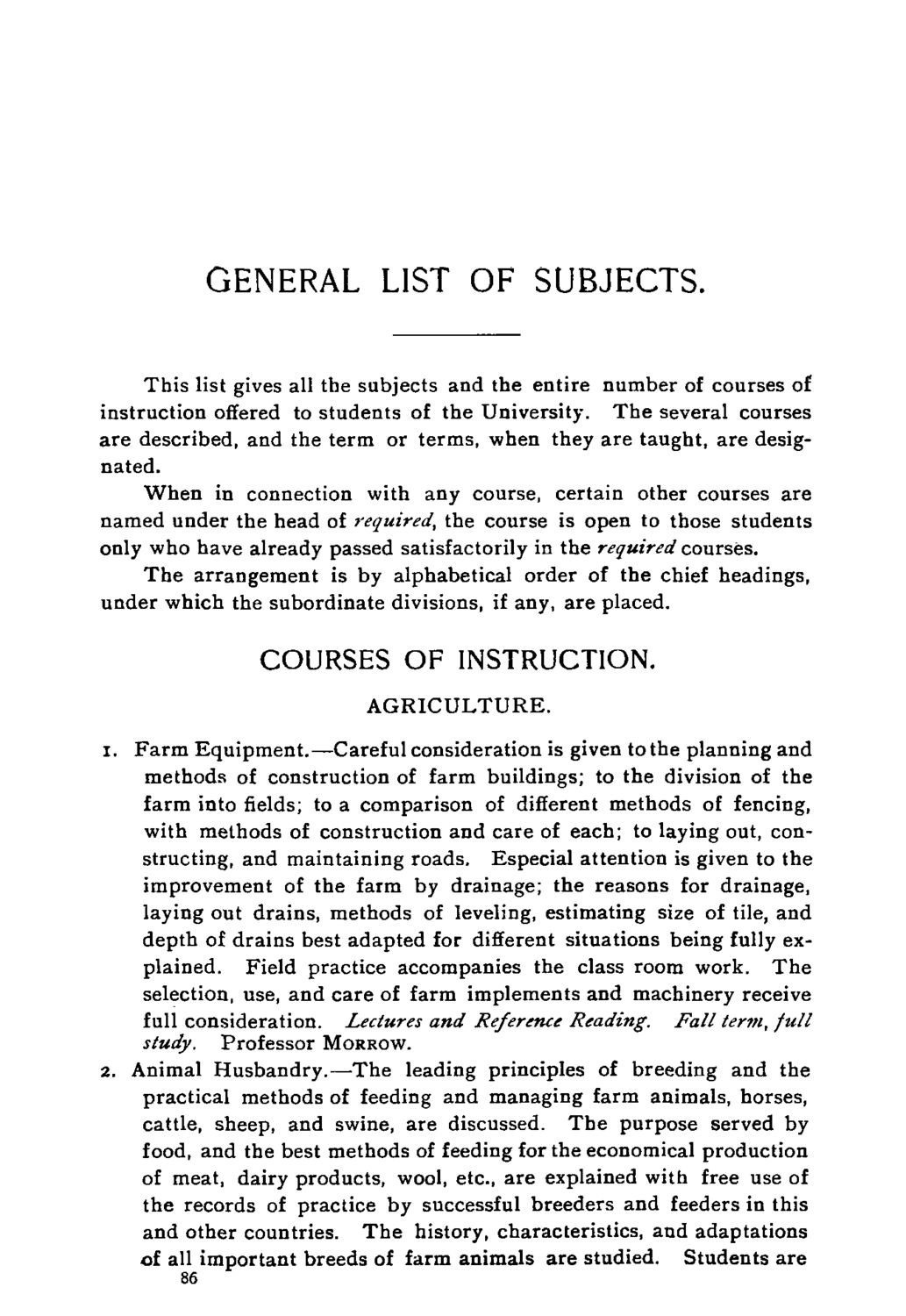| |
| |
Caption: Course Catalog - 1893-1894
This is a reduced-resolution page image for fast online browsing.

EXTRACTED TEXT FROM PAGE:
GENERAL LIST OF SUBJECTS. This list gives all the subjects and the entire number of courses of instruction offered to students of the University. The several courses are described, and the term or terms, when they are taught, are designated. When in connection with any course, certain other courses are named under the head of required, the course is open to those students only who have already passed satisfactorily in the required courses. The arrangement is by alphabetical order of the chief headings, under which the subordinate divisions, if any, are placed. COURSES OF INSTRUCTION. AGRICULTURE. 1. Farm Equipment.—Careful consideration is given to the planning and methods of construction of farm buildings; to the division of the farm into fields; to a comparison of different methods of fencing, with methods of construction and care of each; to laying out, constructing, and maintaining roads. Especial attention is given to the improvement of the farm by drainage; the reasons for drainage, laying out drains, methods of leveling, estimating size of tile, and depth of drains best adapted for different situations being fully explained. Field practice accompanies the class room work. The selection, use, and care of farm implements and machinery receive full consideration. Lectures and Reference Reading. Fall term, full study. Professor MORROW. 2. Animal Husbandry.—The leading principles of breeding and the practical methods of feeding and managing farm animals, horses, cattle, sheep, and swine, are discussed. The purpose served by food, and the best methods of feeding for the economical production of meat, dairy products, wool, etc., are explained with free use of the records of practice by successful breeders and feeders in this and other countries. The history, characteristics, and adaptations of all important breeds of farm animals are studied. Students are 86
| |